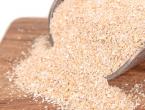Providing nursing care for dislocation algorithm. Providing first aid for dislocations. Anatomical features and classification
3) damage to ligaments and tendons.
Closed injuries (or injuries) usually occur with mechanical strong and short-term impact on soft tissues and internal organs without violating the integrity of the outer integument. Bruises, as a rule, occur when falling on a hard surface that has any protrusions of a rounded shape, as well as in the event of a blow with a blunt object (bottle, fist, etc.).
The nature of the damage depends on the force of the blow, the size and location of the damage. With bruises, swelling of the tissues (edema), pain that worsens with movement, bruising, impaired motor functions are observed (for example, it is difficult to lift or move things with a bruised hand, with a severe leg injury it is impossible to run or walk quickly).
First aid for bruises is as follows:
1) the application of cold (ice, snow) to the site of injury;
2) applying a tight bandage to the site of injury;
3) ensuring rest of the injured limb;
4) delivery of the victim to a medical facility (in case of injury, a crack in the bone may form).
Severe bruises in the head area are especially dangerous, chest and abdomen, also accompanied by severe pain and worsening general condition(with severe bruising of the head, a concussion may occur). The mechanical effect of not very large force on soft tissues in the form of longitudinal stretching can cause stretching of the ligaments, muscles with simultaneous damage to blood vessels.
This usually occurs with sudden impulsive movements in the joint. Far exceeding the limits of normal mobility in it. When stretched, there is pain at the slightest movement, limited mobility, swelling (edema), which quickly increases in size, a slight bruise, which then turns into a bruise.
The procedure for providing first aid for sprains:
1) applying cold (ice, snow) to the damaged area;
2) the imposition of a tight bandage;
2) providing the injured limb with rest and giving it an elevated position;
3) sending (transportation) of the victim to a medical facility (injury center).
Rupture of ligaments or tendons occurs with a rapid mechanical effect on soft tissues with a large force of a short-term nature (i.e., sharply). Ligament or tendon ruptures are most commonly seen in the arms (shoulder, wrist) and legs (knee, foot). When ligaments or tendons are torn, there is a sharp pain, the inability to bend or unbend the damaged limb (arms, legs), the damaged joint quickly increases in size (swells).
First aid for torn ligaments or tendons is provided in the following order:
1) cold (ice or snow) is applied to the damaged area;
2) apply a tight bandage and provide rest to the damaged area;
3) the victim is given an anesthetic (analgin, pentalgin, etc.);
5) urgently deliver the victim to a medical facility (injury center).
Dislocations are also classified as closed injuries. With dislocations, the bones are displaced relative to each other in the joint area with a strong mechanical effect on any limb (arm, leg). With dislocations, there is a noticeable change in the shape of the joint, an unusual position of the affected limb, a change in its length, severe pain in the joint, and the impossibility of movement in it.
The provision of first aid for dislocations is as follows:
1) ensuring the injured limb of rest;
2) applying a tight bandage;
3) taking an anesthetic (analgin, pentalgin);
4) urgent delivery of the victim to a medical facility (injury center).
It is unacceptable to try to set the displaced bones into place on your own. In a number of cases, with closed injuries, muscle rupture occurs due to rapid or sharp mechanical action with great force on soft tissues in the limbs (arms, legs).
When a muscle breaks, the following phenomena occur:
1) sharp pain;
2) a retraction (dent) appears at the site of muscle rupture on the skin, below which a protrusion is noticeable;
3) big swelling;
4) change in skin color (it becomes bluish);
5) the impossibility of moving the injured limb (arm, leg).
The procedure for providing first aid for muscle rupture is as follows:
1) cold (ice, snow) is applied to the damaged area;
2) a tight bandage is applied and rest is provided to the damaged area;
3) the victim is offered to take an anesthetic (analgin, pentalgin);
4) the damaged limb is given an elevated position;
5) the victim is urgently delivered to a medical institution (trauma center).
As medical statistics show, the above types of closed injuries of human organs occur most often on the street, at home, during outdoor activities (and especially when intoxicated).
First aid for fractures.
In the presence of ice on the streets, injuries such as open or closed fractures often occur. Fractures are violations of the integrity of the bone as a result of mechanical impact during a fall with support on the limb of most of the body (on the arm or leg with tucking them in the fall).
With fractures, sharp pain is observed, which increases with any movement and load on the limb, the destruction of its functions, a change in its position and shape, the appearance of swelling and bruising, shortening and pathological mobility of the bone (mobility appears in an unusual place). With an open fracture, its area communicates with the external environment and there is a wound in the fracture zone. This type of fracture is dangerous for human health and life due to the large loss of blood, the possibility of developing traumatic shock and possible infection.
First aid for open fractures consists of the following actions:
1) stopping bleeding and treating the edges of the wound with an antiseptic (iodine, hydrogen peroxide, etc.);
2) applying a sterile bandage to the wound in the area of the fracture;
3) taking painkillers (analgin, pentalgin);
4) carrying out immobilization (immobilization) of the limb in the position in which it was at the time of injury;
5) urgent transportation of the victim to a medical institution (trauma center).
With open fractures, the victim is transported to the trauma center only on a stretcher in the supine position. With a closed fracture, there is no wound in the fracture zone. Closed fractures have the following characteristic external signs: severe acute pain, violation of straightness and the appearance of a “step” at the fracture site, abnormal mobility of parts of the limb, crunching of fragments, swelling at the fracture site.
When providing first aid for fractures, in no case should you try to combine bone fragments, eliminate the curvature of the limb with a closed fracture, or set the bone that has come out with an open fracture. The victim is rushed to the emergency room. When providing first aid in cases of various types of fractures, as well as damage to the joints, the main action is the reliable and timely immobilization of a body part.
This achieves immobility of the damaged part of the body, which helps to reduce pain and prevents the intensification of traumatic shock. In addition, the risk of re-damage during transport is also eliminated and the possibility of complications from infectious exposure is reduced. To perform temporary immobilization, standard tires are usually used, and in the absence of them, various improvised materials (boards, plywood, hard cardboard, etc.) are used. In special cases, when there are no standard splints and no suitable auxiliary materials, transport immobilization is allowed by bandaging the injured limb to a healthy part of the body: the lower limb to the healthy leg, and the arms to the trunk.
During transport immobilization, the following basic rules are observed:
1) when using a standard splint, it must necessarily capture two joints - above and below the fracture, and sometimes three - in cases of a hip or shoulder fracture;
2) when performing immobilization of the limb, it is necessary, if possible, to give it a natural position, and if this is not possible, then maintain a position in which the limb is least injured;
3) in case of any fractures, fragments cannot be reduced, if necessary, a sterile bandage is applied and the limb is fixed in the position in which it was at the time of injury;
4) in case of closed fractures, clothes should not be removed from the victim, and if necessary, it should be cut with a blade or scissors in the area of injury;
5) it is impossible to impose a hard tire directly on the body, it is necessary to put a soft pad under it (cotton wool or a clean towel);
6) during the transfer of the patient from the stretcher, the injured limb must be supported by the second assistant.
Failure to comply with the above rules can lead to complications, for example, insufficient immobilization of a closed fracture can turn it into an open one and thereby aggravate the injury. Do not tie the splint too tight, as this can cut off circulation and cause severe pain.
You need to loosen the bandage if:
The victim's fingers are swollen and blue or impossible to move;
The area of the body under the tire is numb and tingling is felt in it, at the same time, the pulse is not felt under the tire;
Nails do not return to normal color after 2 seconds after pressing.
In some cases, when the pelvic girdle is injured, fractures of the pelvic bones occur. In severe injuries of this kind, there are multiple fractures of the pelvic bones, accompanied by a large loss of blood, damage to the bladder, etc.
First aid for a fracture of the pelvic bones is as follows:
1) the victim is laid on his back, on a solid shield (boards or plywood);
2) a rolled-up blanket or coat is placed under the knees so that the lower limbs are bent at the knees or spread apart;
3) the victim is given an anesthetic (analgin, pentalgin);
4) urgently deliver the victim to the emergency room.
Content
A condition in which there is a displacement of the bones at the junction with the joint is called a dislocation. Pathologies are congenital, traumatic and developing due to inflammatory processes due to a number of specific diseases. First aid to the patient should be provided for the last two types of damage.
signs
In the human body, the neck, ankle, ankle, legs, hip and shoulder joints are more prone to dislocation. The symptoms of displacement depend on the location of the damage, but the main signs are identical in all cases:
- crunch or pop at the time of injury;
- severe pain at the site of injury;
- edema, swelling of the injured area;
- bruising;
- decreased sensitivity due to injury to nerve endings;
- tingling, numbness;
- visible deformation;
- restriction of mobility;
- pallor of the skin.
The difference between a dislocation and a fracture
It is important to be able to distinguish a dislocation from a fracture in order to determine the type of injury and provide the necessary first aid, if possible. These two conditions can be distinguished by some signs:
|
Displacement of bones |
broken bones |
|
|
Appears immediately and intensifies during movement |
At the time of injury, it may be absent, but later it manifests itself very intensively, and during movement it becomes unbearable. |
|
|
puffiness |
Appears quickly. The injury site swells and swells almost always |
It appears in most cases, has a pronounced character. |
|
Deformity of the injured body part |
Always present |
Seen frequently. |
|
Blood in the joint |
It is observed in many cases, accompanied by rupture of ligaments |
Present with internal fracture. |
|
Active motor movements of the injured part |
Impossible |
Limited because they cause severe pain. |
|
Passive movements |
Severely limited, as any movement increases pain |
Strongly painful. |

First aid for dislocation
The most important and first aid for dislocations of the joints is to arrange a meeting of the victim with the doctor as soon as possible. The injured person must be taken to an emergency room or hospital. If this is not possible, then you need to call an ambulance and provide first aid:
- Reassure the victim, prevent him from panicking, set him up for a calm expectation of help.
- If the integrity of the blood vessels is violated, the bleeding must be stopped, the wound treated with an antiseptic and covered with a sterile bandage.
- Fix the injured limb in immobility, using a scarf, splints. Fixation is allowed to be done only if you have the appropriate skills after stopping the bleeding.
Shoulder dislocation
First aid for shoulder dislocations must be done in a timely manner. It is important to first immobilize the area of injury, using improvised means. To limit possible involuntary movements, it is necessary to use a bandage of a kerchief type. The hand with a dislocation of the shoulder joint is often taken away from the body, so you need to fix it in the same position, bending at the elbow. Cold (ice or a frozen product) should be applied to the injury site to prevent swelling, and then wait for the doctor.

With hip dislocation
The victim must be quickly delivered to the traumatology, but it is not advisable to do this on your own. A specially equipped ambulance or emergency vehicle is required. If the hip is damaged before the arrival of doctors, the victim can be given the following first aid:
- give painkillers (in tablets or by injection);
- perform immobilization (fix the injured limb);
- put on the area of the hip joint cold.
Is it possible to self-reset a dislocated joint
First aid for dislocations of any localization should be carried out by specialists. It is impossible to set a dislocation on your own, because it is difficult to determine a specific type of displacement without experience, and an attempt at inept treatment can lead to even more damage. Stages of first aid:
- leave the victim in the position in which he was after the injury;
- the limb cannot be straightened and rotated;
- fix the damaged place with a tire;
- if the hip joint is dislocated, then tie a healthy leg to the injured one with bandages;
- in case of an ankle injury, place a roller or pillow under the leg;
- if damage to the collarbone is suspected, place the roller in the armpit;
- transport the victim on a rigid stretcher or surfaces;
- do not apply warm compresses to the injury.
Video
Did you find an error in the text?
Select it, press Ctrl + Enter and we'll fix it!
A dislocation refers to the displacement of the ends of the bones connecting in the joint, as a result of which the functionality of the joint is impaired. Dislocations can be congenital or acquired. Acquired dislocations can be traumatic and pathological. Pathological dislocations are associated with the disease. Traumatic dislocations are the most common. The majority of dislocations is a severe injury leading to functional impairment in the future, in some cases it can even threaten the life of the patient. Such cases include dislocations of the vertebrae in the cervical spine, which can be obtained as a result of diving in an unfamiliar place or in shallow water.
Signs of dislocation include the appearance of sharp pain, a change in the shape of the joint, limited or impossibility of movement in the joint. It is not recommended to reduce the dislocation at the scene of the accident, because. these movements may cause further injury. The reduction should be performed by a doctor after an X-ray examination using an anesthetic.
First aid for dislocations
The dislocation should be repaired as soon as possible. First aid for dislocations is to fix the limb. The limb must be fixed in the position in which it is as a result of dislocation. Upper limb hung on a sling of bandage or scarf. Tires or improvised means, for example, branches, boards, are used to fix the lower limb. If possible, you should try to fix 1 joint above and 1-2 joints below the damaged one. One lower limb can be fixed by bandaging it to the intact opposite limb.
After the limb is fixed, the victim needs to call an ambulance or take him to the emergency room on his own, where he will be provided with further assistance. It is forbidden to reduce the dislocation when providing emergency medical care, being outside the medical institution due to the fact that it is dangerous to view and cause a fracture, you can damage the neurovascular bundle. And urgent x-ray quality control of care is also needed.
Cold should be applied to the affected area.
With a dislocation in the elbow joint, a bandage is made from a large scarf. To do this, you need to put your hand bent at the elbow in the middle of the head scarf, folded with a scarf, and tie the ends of the scarf around the neck so that the hand is supported by a bandage.
When assisting with a dislocation, care must be taken to ensure that no signs of shock appear. The victim needs to be comfortable and try to calm him down.
After the dislocation is fixed, the victim must be taken to a medical facility. If the dislocation is open, then it is necessary to apply an aseptic bandage to the wound. During transportation, cold can be applied to the damaged joint. A bubble can be used as a cold cold water or with ice. Warm compresses are not recommended. After the dislocation is reduced, as a rule, a plaster cast is applied to the damaged joint for a while until the torn capsule and ligaments grow together. After the plaster is removed, therapeutic exercises and physiotherapy are prescribed.
A dislocation refers to the displacement of the ends of the bones connecting in the joint, as a result of which the functionality of the joint is impaired. Dislocations can be congenital or acquired. Acquired dislocations can be traumatic and pathological. Pathological dislocations are associated with the disease. Traumatic dislocations are the most common. The majority of dislocations is a severe injury leading to functional impairment in the future, in some cases it can even threaten the life of the patient. Such cases include dislocations of the vertebrae in the cervical spine, which can be obtained as a result of diving in an unfamiliar place or in shallow water.
Signs of dislocation include the appearance of sharp pain, a change in the shape of the joint, limited or impossibility of movement in the joint. It is not recommended to reduce the dislocation at the scene of the accident, because. these movements may cause further injury. The reduction should be performed by a doctor after an X-ray examination using an anesthetic.
First aid for dislocations
The dislocation should be repaired as soon as possible. First aid for dislocations is to fix the limb. The limb must be fixed in the position in which it is as a result of dislocation. The upper limb is hung on a sling of bandage or scarf. Tires or improvised means, for example, branches, boards, are used to fix the lower limb. If possible, you should try to fix 1 joint above and 1-2 joints below the damaged one. One lower limb can be fixed by bandaging it to the intact opposite limb.
After the limb is fixed, the victim needs to call an ambulance or take him to the emergency room on his own, where he will be provided with further assistance. It is forbidden to reduce the dislocation when providing emergency medical care, being outside the medical institution due to the fact that it is dangerous to view and cause a fracture, you can damage the neurovascular bundle. And urgent x-ray quality control of care is also needed.
Cold should be applied to the affected area.
With a dislocation in the elbow joint, a bandage is made from a large scarf. To do this, you need to put your hand bent at the elbow in the middle of the head scarf, folded with a scarf, and tie the ends of the scarf around the neck so that the hand is supported by a bandage.
When assisting with a dislocation, care must be taken to ensure that no signs of shock appear. The victim needs to be comfortable and try to calm him down.
After the dislocation is fixed, the victim must be taken to a medical facility. If the dislocation is open, then it is necessary to apply an aseptic bandage to the wound. During transportation, cold can be applied to the damaged joint. As a cold, a bubble with cold water or ice can be used. Warm compresses are not recommended. After the dislocation is reduced, as a rule, a plaster cast is applied to the damaged joint for a while until the torn capsule and ligaments grow together. After the plaster is removed, therapeutic exercises and physiotherapy are prescribed.




